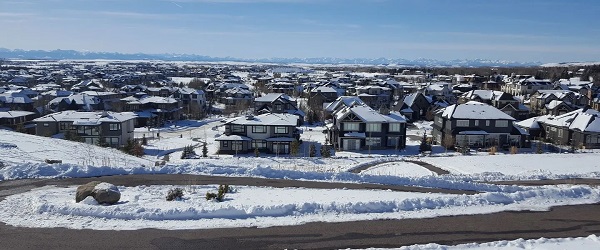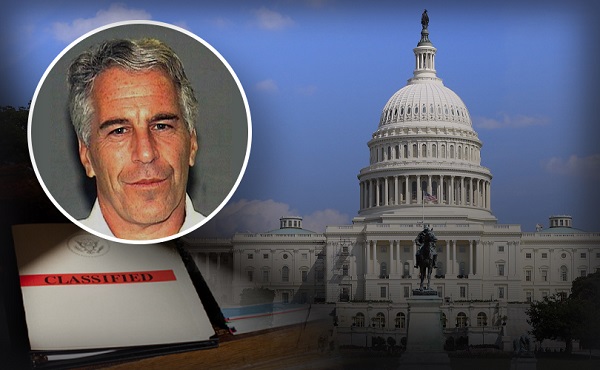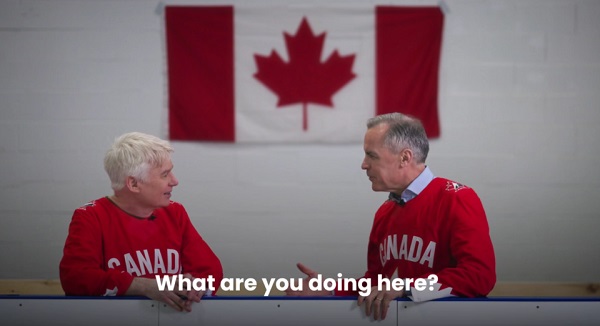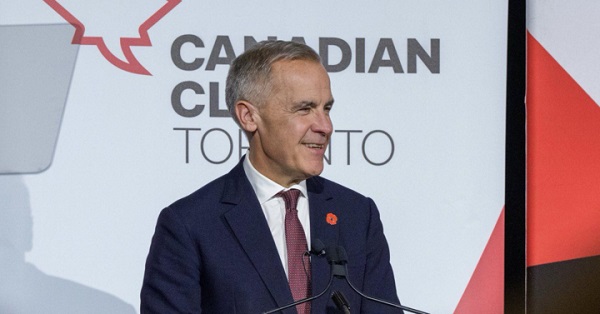Economy
The wall of death for western economies
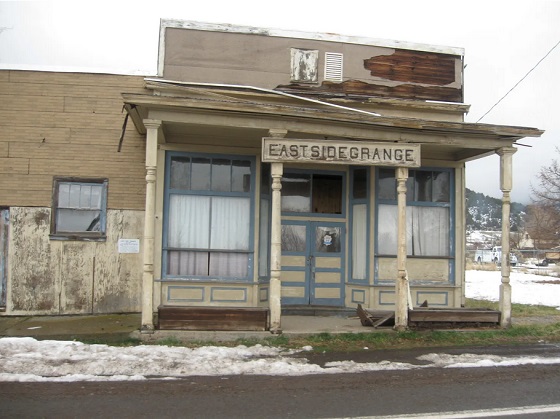
From the Frontier Centre for Public Policy
This is an easy fix – you just have to demand it
When I drove 20,000 miles through rural America a few years back, I was struck by the dilapidated nature of, well, just about everything. The towns were rundown, there were thousands of abandoned farms and ranches and family houses. Sidewalks broken, every other shop was abandoned. Fields ran untended, forests filled with brush and fire ladders, hangers-on in trailers with a junkyard dog and rifle racks on trucks. Hunting was a necessity, not a sport.
In sharp contrast I grew up in a country village of 500 surrounded by tidy productive prosperous farms, and we were a going concern with stone and brick buildings, and beautiful crafted family houses, lawns and weirs, a village pond with ducks, mature trees. Some estates, but not vulgar monstrosities like today. Everyone adult chipped in. It was vivid, active, close-connected, multi-generational and I never wanted to leave.
What the hell happened?
I didn’t fully understand until a hydrologist in Denver, retired from a career at the Department of Interior, told me at lunch in an Olive Garden, that in the mid-70’s, the blanket instructions coming down from DC switched from enabling business and development to preventing it. He, in his retirement, had a small ranch and on his wells, four meters from four different federal and state bureaucracies, indicating just how closely he was being surveilled. Over the years, regulations had come down so thick and punitive, near everyone operated in a catch-22 situation. You might hurdle one set of regs, only to discover that your success meant another set of regs cancelled you. It was so irrational it was fiendish, I thought to myself. Now of course, I see it as actually fiendish, the work of evil. The government was deliberately ruining peoples’ lives, drawing them down, impoverishing them, with malice.
The only prosperity to be seen was in the rather splendid buildings of the Army Corps of Engineers, and the palatial “farmhouses” owned by what I came to recognize as government farmers, the ones who had lobbied hard and got all the subsidies. Oh yes, and ethanol plants, one of the first green scams. They ate money.
Last week I was in the provincial capital near me, picking up something in Oak Bay Village, ultra-posh in a villagy Englishy way, half-timbered buildings, human-scaled, friendly. And found it to be in the same state, everything covered in a wash of grey, empty shops, abandoned stores, people shriveled and tired. I used to take my mother shopping there, and since she died, hadn’t had the heart to go back. Therefore I was disturbed, even shocked at the change. If the prettiest street in the prettiest city in Canada, visited by millions of tourists a year was dying….I’m sorry, Leading Indicator.
If the prettiest street in the prettiest city in Canada, visited by millions of tourists a year was dying….I’m sorry, Leading Indicator.
In fact, in Canada, even the food banks are running out of food. Bodies are piling up in mortuaries because people can’t afford to bury their dead. Chronically injured soldiers are offered Medically Assisted Dying in lieu of treatment. MAID has saved the “free” health system $90 million in end-of-life care, since it began. So we have to expect more of that.
A recent report showed the MAID drugs mean you drown to death, but are paralyzed so can’t communicate your distress. That means you can drown for 45 minutes before you actually die – autopsies have proved it. That is how careless our health bureaucracy is. I cannot watch another single mother weeping on TikTok because she cannot feed her children and is always sick. Another once athletic mountain climber sit in a wheelchair detailing her story of neurological pain so intense after vaccine, her husband had to sit with her so she wouldn’t kill herself. Every bureaucracy is killing us.
The U.S. still has the healthiest economy in the world. The thirteen other less rich countries are in per capita recession, which means GDP per person is shrinking: Canada, France, Germany, UK, Australia. Japan just registered a -2% growth rate, but it is already a zombie economy with families living paycheck to paycheck. Like addicts.
It may be that all I have is a hammer but, to me, this is due to impossible green mandates, the choking of energy supplies, the insane expense of green energy infrastructure which doesn’t produce and doesn’t “save money” and above all regulation that means that every job in a small cap public company labors under $50,000 of government ESG mandates. For every $1 you pay your average employee, you pay the government $1.50. That’s before taxes. Not that you have any income to tax. Government is literally eating us alive.
The U.S., according to Bloomberg, is facing a Wall of Death. Or Debt. Bloomberg says 42% of small public companies are losing money; not only that they face a $832 billion wall of debt, $600 billion of which comes due at much much higher interest rates in the next two years.
Let’s be really clear about where that debt came from. It came from people like our Fed Chair who asset stripped all these companies, loaded them with debt, mis-stated their value and sold them on. This is how Jerome Powell made his $50,000,000. He ruined a widget manufacturer. That debt is his dirty-but-not illegal play; his fortune, his I got mine and now I’m in “public service”. Suffer you peons, suffer more. And the dirty profoundly unethical play of all his associates. When Warren Buffet says he has $180 billion in cash because the market is over-valued, that is down to him and his pals loading up every small and medium manufacturer in the U.S. with debt, selling them on, whereupon another pirate buys the company, mis-states its value, borrows a bunch of money against it, raises the price, and sells it on. ALL small cap street profits in the fifteen years come from that criminal activity by our financial elites. Of course the market is over-valued. They over-valued it to steal from it.
The big companies only carry 50% of the debt of small caps. For small caps, the absolute heroes in this story, in the first quarter of 2024, their sales rose .3%, but inflation for that quarter was 1.1%. Bank of America says that small cap earnings will drop by one-third in the next year. Thanks to the miracle of Bidenomics, sales are dead other than the doom spending of hopeless millennials.
In contrast, big companies have gained 14% and big tech stocks earn 90% of all the gains. Where do you think the next play might be? That’s right, tech.
Median priced houses are now worth 7.8 times median income, twice the normal level, that ratio even above the housing bubble of 08. Housing prices are slated to rise 20% in the next year. One in five renters are either skipping meals or selling personal belongings to make rent. Rents will rise double digits in the coming year according to the New York Fed. Millennials have given up, reverting to a nihilistic hand-to-mouth existence.
According to economist Peter St. Onge, who aggregated many of the above states, the first twenty rungs of the ladder have been knocked out.
This is due entirely to the gutting of the heartland, the shipping of manufacturing to the CCP slave state, and the subsequent financialization of the economy. Value is now calculated on the future labor of people whose jobs are being killed off. They are financializing something that is dying. They know it, you know it, the government knows it.
The core reason for the invasion at the border is for immigrants they can pay dirt wages to keep the whole thing going for a few more years. Your kids, your future? Forget about it.
Of course the bankers have a solution. You know they do. It’s not a sensible, compassionate, creative and exciting solution whereby your life and mine is going to get much much better. It is a solution that means your kids and grandkids are going to live in a world wrought with poverty-driven crime, and dying cities and towns. But never mind! The market will make out like a bandit. The secret lies in the fact that 90% of all gains are currently being made by the digital aristocracy.
That will continue and this is how. To make up for destroying production, the government and markets will list you, your house, yard, cars, boats etc., as a federal asset. As well as national parks, conservation areas, wildlife areas, all ecological study zones, and so on. Then they will borrow against it. Everything you own, because of our federal debt, will be theirs.
The secret, obviously lies in the fact that currently 90% of all gains being made by the digital aristocracy,
It’s the only way. We are de-developing; correction, we are being forced to de-develop. We are de-industrializing, and our hard assets, our water, land and mineral resources are being sequestered from use. We cannot use anything to build anything. We won’t even own our houses, our gardens. We will have a senior partner in our financial lives who tells us what we may do and how much oxygen and water and power we may use. We are finished. We are future peasants.
The Play
Earlier this year, American Stewards, a few state governors and a handful of Congress people managed to stop the SEC from installing a rule allowing for the financialization of America’s national parks. But under the radar, because no media does any work whatsoever on this file, the Biden administration has reworked the proposal. Herewith is what is happening in the U.S.
The 2030 Agenda means that 30% of America’s lands have to be turned into a nature preserve by 2030. All those withdrawals from use hold incredible natural wealth and beauty never to be used or seen by Americans. The April 22, 2024, Fact Sheet notes some of the significant land and mineral withdrawals made to help reach 30×30. That wealth could be used by Americans to build cities and companies and full-on effulgent family and community lives. But it is to be locked away. How much is being locked away? The Biden administration estimates that land held privately, one-third of the U.S. to be worth $32 Trillion. So 2030 lands are worth $32 trillion.
So the idea is to lock away at least $32 trillion worth of resources. While people can’t make their rent. While single mothers weep and beg on socials. While people are electing to die because it is too expensive to live. While an entire generation has no hope and is descending into nihilism.
American Stewards reported the two significant Earth Day announcements released from the White House
“The Administration has already protected more than 41 million acres of lands and waters, and President Biden is on track to conserve more lands and waters than any President in history. This includes establishing five new national monuments and restoring protections for three more; creating four new national wildlife refuges and expanding five more; protecting the Boundary Waters of Minnesota, the nation’s most visited wilderness area; safeguarding Bristol Bay in southwest Alaska; and withdrawing Chaco Canyon in New Mexico and Thompson Divide in Colorado from further oil and gas leasing to protect thousands of sacred sites and pristine lands.”
Next, they unveiled a new website, conservation.gov that houses the American Conservation and Stewardship Atlas mapping tool. The Atlas was created to track the progress of 30×30 including the protected status of the lands as well as quantifying natural processes such as photosynthesis and pollination used to manufacture an arbitrary ecosystem service value.”
This is where the digital comes in. All those lands have to be surveilled. All those assets, including you and your house and your car, have to be surveilled. The money that will require installing these surveillance tools will be made by the digital titans, because that’s where the money is, now that lands, resources, labor have been destroyed.
As American Stewards reports: in January of 2023, the White House announced the “National Strategy to Develop Statistics for Environmental – Economic Statistics.” Since then, they have been working to establish a methodology to value the ecosystem services.
There are four accounts: Land, Water, Air Emissions and Economic Activity.
The Pilot Land Account measures the economic activity and total market value for all the land in the United States, 2.3 billion acres. They estimate that at around $100 trillion, which includes the 30% owned by humans.
In essence, the administration is conscripting private citizens’ land to secure the national debt, unbeknown to the American people and Congress. And using common land as well. Common land is owned by the people of the country, not the government and not the Nature Conservancy. It is yours. But, they are developing mechanisms to make it theirs. This is the first step.
The Pilot National Air Emissions Account “measures greenhouse gas emissions associated with specific industries on a national scale.” And you. Your CO2 emissions will be tracked and your allowance measured.
Ten years ago I sat in a rancher’s house deep in Wyoming and he told me that his land would be used as collateral for the National Debt that China holds. I felt dread in the pit of my stomach because I felt instinctively he was right. Subsequently, I don’t know how many people told me that was impossible, I was wrong, he was wrong, crazy.
No baby, we weren’t wrong. They are monetizing all public and private land to pay or support the national debt. And the way they are doing it, is by shutting down economic activity, across the board. We will be a resource to be played, monetized, surveilled and restricted for the profits of the market, and the destructive machinations of the bureaucracy.
And all the money to be made from it is digital. And that money, those resources they are stealing? They belong to us.
In my next article, I will describe in detail the players in this game, how the National Security State, Mossad, the PayPal Mafia, Drexel Burnam heirs, President Trump’s economic advisers, are working to destroy the hope of South and Central America. It is complex, fiendish and fascinating. This series starting today, points out that the Green takeover, mostly surreptitious, is driving the world’s economy into the dirt. It is based on falsified science, and convoluted financial ideas that fail repeatedly. Fix this, and we will be living in a Golden Age.
Elizabeth Nickson is a Senior Fellow at the Frontier Centre for Public Policy. Her studies and commentaries at the Frontier Centre can be accessed here. Follow her on Substack here. Her best-selling book Eco-Fascists can be purchased here.
Business
Budget 2025: Ottawa Fakes a Pivot and Still Spends Like Trudeau

It finally happened. Canada received a federal budget earlier this month, after more than a year without one. It’s far from a budget that’s great. It’s far from what many expected and distant from what the country needs. But it still passed.
With the budget vote drama now behind us, there may be space for some general observations beyond the details of the concerning deficits and debt. What kind of budget did Canada get?
Haultain’s Substack is a reader-supported publication.
To receive new posts and support our work, please consider becoming a free or paid subscriber.
Try it out.
For a government that built its political identity on social-program expansion and moralized spending, Budget 2025 arrives wearing borrowed clothing. It speaks in the language of productivity, infrastructure, and capital formation, the diction of grown-up economics, yet keeps the full spending reflex of the Trudeau era. The result feels like a cabinet trying to change its fiscal costume without changing the character inside it. Time will tell, to be fair, but it feels like more rhetoric, and we have seen this same rhetoric before lead to nothing. So, I remain skeptical of what they say and how they say it.
The government insists it has found a new path, one where public investment leads private growth. That sounds bold. However, it is more a rebranding than a reform. It is a shift in vocabulary, not in discipline.
A comparison with past eras makes this clear.
Jean Chrétien and Paul Martin did not flirt with restraint; they executed it. Their budgets were cut deeply, restored credibility, and revived Canada’s fiscal health when it was most needed. The Chrétien years were unsentimental. Political capital was spent so financial capital could return. Ottawa shrank so the country could grow. Budget 2025 tries to invoke their spirit but not their actions. Nothing in this plan resembles the structural surgery of the mid 1990s.
Stephen Harper, by contrast, treated balanced budgets as policy and principle. Even during the global financial crisis, his government used stimulus as a bridge, not a way of life. It cut taxes widely and consistently, limited public service growth, and placed the long-term burden on restraint rather than rhetoric. Budget 2025 nods toward Harper’s focus on productivity and capital assets, yet it rejects the tax relief and spending controls that made his budgets coherent.
Then there is Justin Trudeau, the high tide of redistribution, vacuous identity politics, and deficit-as-virtue posturing. Ottawa expanded into an ideological planner for everything, including housing, climate, childcare, inclusion portfolios, and every new identity category. Much of that ideological scaffolding consisted of mere words, weakening the principle of equality under the law and encouraging the government to referee culture rather than administer policy.
Budget 2025 is the first hint of retreat from that style. The identity program fireworks are dimmer, though they have not disappeared. The social policy boosterism is quieter. Perhaps fiscal gravity has begun to whisper in the prime minister’s ear.
However, one cannot confuse tone for transformation.
Spending is still vast. Deficits grew. The new fiscal anchor, balancing only the operating budget, is weaker than the one it replaced. The budget relies on the hopeful assumption that Ottawa’s capital spending will attract private investment on a scale that economists politely describe as ambitious.
The housing file illustrates the contradiction. The budget announces new funding for the construction of purpose-built rentals and a larger federal role in modular and subsidized housing builds. These are presented as productivity measures, yet they continue the Trudeau-era instinct to centralize housing policy rather than fix the levers that matter. Permitting delays, zoning rigidity, municipal approvals, and labour shortages continue to slow actual construction. Ottawa spends, but the foundations still cure at the same pace.
Defence spending tells the same story. Budget 2025 offers incremental funding and some procurement gestures, but it avoids the core problem: Canada’s procurement system is broken. Delays stretch across decades. Projects become obsolete before contracts are signed. The system cannot buy a ship, an aircraft, or an armoured vehicle without cost overruns and missed timelines. Spending more through this machinery will waste time and money. It adds motion, not capability.
Most importantly, the structural problems remain untouched: no regulatory reform for major projects, no tax competitiveness agenda, no strategy for shrinking a federal bureaucracy that has grown faster than the economy it governs. Ottawa presides over a low-productivity country but insists that a new accounting framework will solve what decades of overregulation and policy clutter have created. More bluster.
To receive new posts and support our work, please consider becoming a free or paid subscriber.
From an Alberta vantage, the pivot is welcome but inadequate. The economy that pays for Confederation, energy, mining, agriculture, and transportation receives more rhetorical respect in Budget 2025, yet the same regulatory thicket that blocks pipelines and mines remains intact. The government praises capital formation but still undermines the key sectors that generate it.
Budget 2025 tries to walk like Chrétien and talk like Harper while spending like Trudeau. That is not a transformation; it is a costume change. The country needed a budget that prioritized growth rooted in tangible assets and real productivity. What it got instead is a rhetorical turn without the courage to cut, streamline, or reform.
Canada does not require a new budgeting vocabulary. It requires a government willing to govern in the best interest of the country.
Haultain’s Substack is a reader-supported publication.
Help us bring you more quality research and commentary.
Carbon Tax
Carney fails to undo Trudeau’s devastating energy policies

From the Fraser Institute
By Tegan Hill and Elmira Aliakbari
On the campaign trail and after he became prime minister, Mark Carney has repeatedly promised to make Canada an “energy superpower.” But, as evidenced by its first budget, the Carney government has simply reaffirmed the failed plans of the past decade and embraced the damaging energy policies of the Trudeau government.
First, consider the Trudeau government’s policy legacy. There’s Bill C-69 (the “no pipelines act”), the new electricity regulations (which aim to phase out natural gas as a power source starting this year), Bill C-48 (which bans large oil tankers off British Columbia’s northern coast and limit Canadian exports to international markets), the cap on emissions only from the oil and gas sector (even though greenhouse gas emissions have the same effect on the environment regardless of the source), stricter regulations for methane emissions (again, impacting the oil and gas sector), and numerous “net-zero” policies.
According to a recent analysis, fully implementing these measures under Trudeau government’s emissions reduction plan would result in 164,000 job losses and shrink Canada’s economic output by 6.2 per cent by the end of the decade compared to a scenario where we don’t have these policies in effect. For Canadian workers, this will mean losing $6,700 (annually, on average) by 2030.
Unfortunately, the Carney government’s budget offers no retreat from these damaging policies. While Carney scrapped the consumer carbon tax, he plans to “strengthen” the carbon tax on industrial emitters and the cost will be passed along to everyday Canadians—so the carbon tax will still cost you, it just won’t be visible.
There’s also been a lot of buzz over the possible removal of the oil and gas emissions cap. But to be clear, the budget reads: “Effective carbon markets, enhanced oil and gas methane regulations, and the deployment at scale of technologies such as carbon capture and storage would create the circumstances whereby the oil and gas emissions cap would no longer be required as it would have marginal value in reducing emissions.” Put simply, the cap remains in place, and based on the budget, the government has no real plans to remove it.
Again, the cap singles out one source (the oil and gas sector) of carbon emissions, even when reducing emissions in other sectors may come at a lower cost. For example, suppose it costs $100 to reduce a tonne of emissions from the oil and gas sector, but in another sector, it costs only $25 a tonne. Why force emissions reductions in a single sector that may come at a higher cost? An emission is an emission regardless of were it comes from. Moreover, like all these policies, the cap will likely shrink the Canadian economy. According to a 2024 Deloitte study, from 2030 to 2040, the cap will shrink the Canadian economy (measured by inflation-adjusted GDP) by $280 billion, and result in lower wages, job losses and a decline in tax revenue.
At the same time, the Carney government plans to continue to throw money at a range of “green” spending and tax initiatives. But since 2014, the combined spending and forgone revenue (due to tax credits, etc.) by Ottawa and provincial governments in Ontario, Quebec, British Columbia and Alberta totals at least $158 billion to promote the so-called “green economy.” Yet despite this massive spending, the green sector’s contribution to Canada’s economy has barely changed, from 3.1 per cent of Canada’s economic output in 2014 to 3.6 per cent in 2023.
In his first budget, Prime Minister Carney largely stuck to the Trudeau government playbook on energy and climate policy. Ottawa will continue to funnel taxpayer dollars to the “green economy” while restricting the oil and gas sector and hamstringing Canada’s economic potential. So much for becoming an energy superpower.
-

 Carbon Tax7 hours ago
Carbon Tax7 hours agoCarney fails to undo Trudeau’s devastating energy policies
-

 Business2 days ago
Business2 days agoNew airline compensation rules could threaten regional travel and push up ticket prices
-

 Censorship Industrial Complex2 days ago
Censorship Industrial Complex2 days agoMove over Soviet Russia: UK Police Make 10,000 Arrests Over “Offensive” Online Speech
-
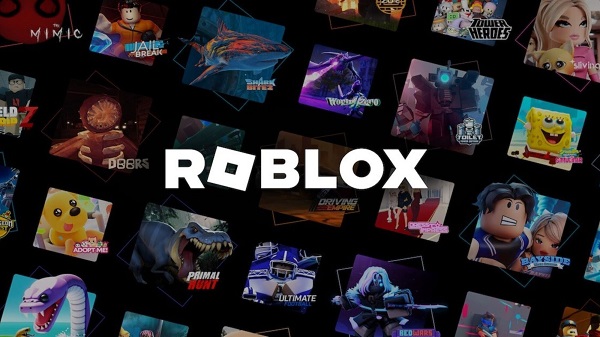
 Digital ID2 days ago
Digital ID2 days agoRoblox to Mandate Facial and ID Verification
-

 Business3 hours ago
Business3 hours agoBudget 2025: Ottawa Fakes a Pivot and Still Spends Like Trudeau
-

 Alberta2 days ago
Alberta2 days agoAlberta bill would protect freedom of expression for doctors, nurses, other professionals
-

 Health3 hours ago
Health3 hours agoTens of thousands are dying on waiting lists following decades of media reluctance to debate healthcare
-

 COVID-192 days ago
COVID-192 days agoFreedom Convoy protestor Evan Blackman convicted at retrial even after original trial judge deemed him a “peacemaker”





